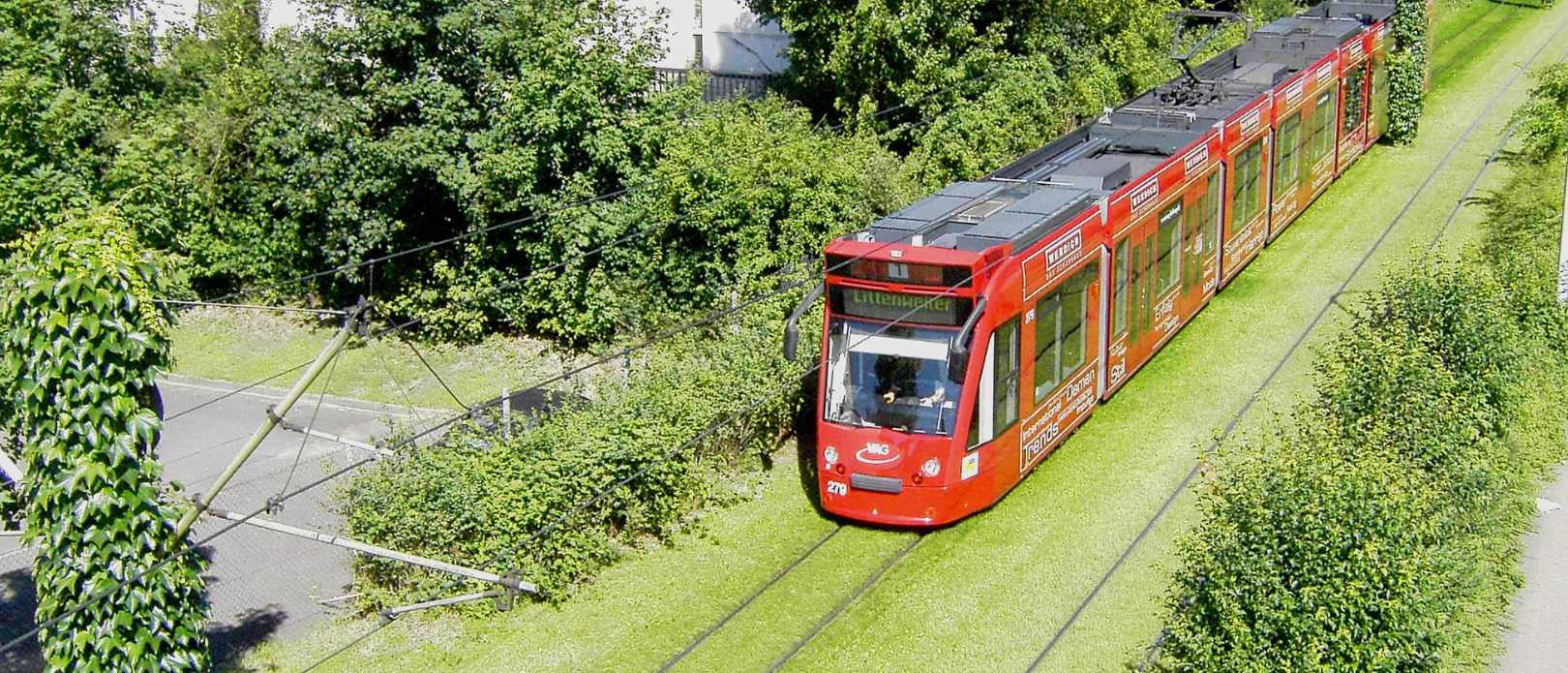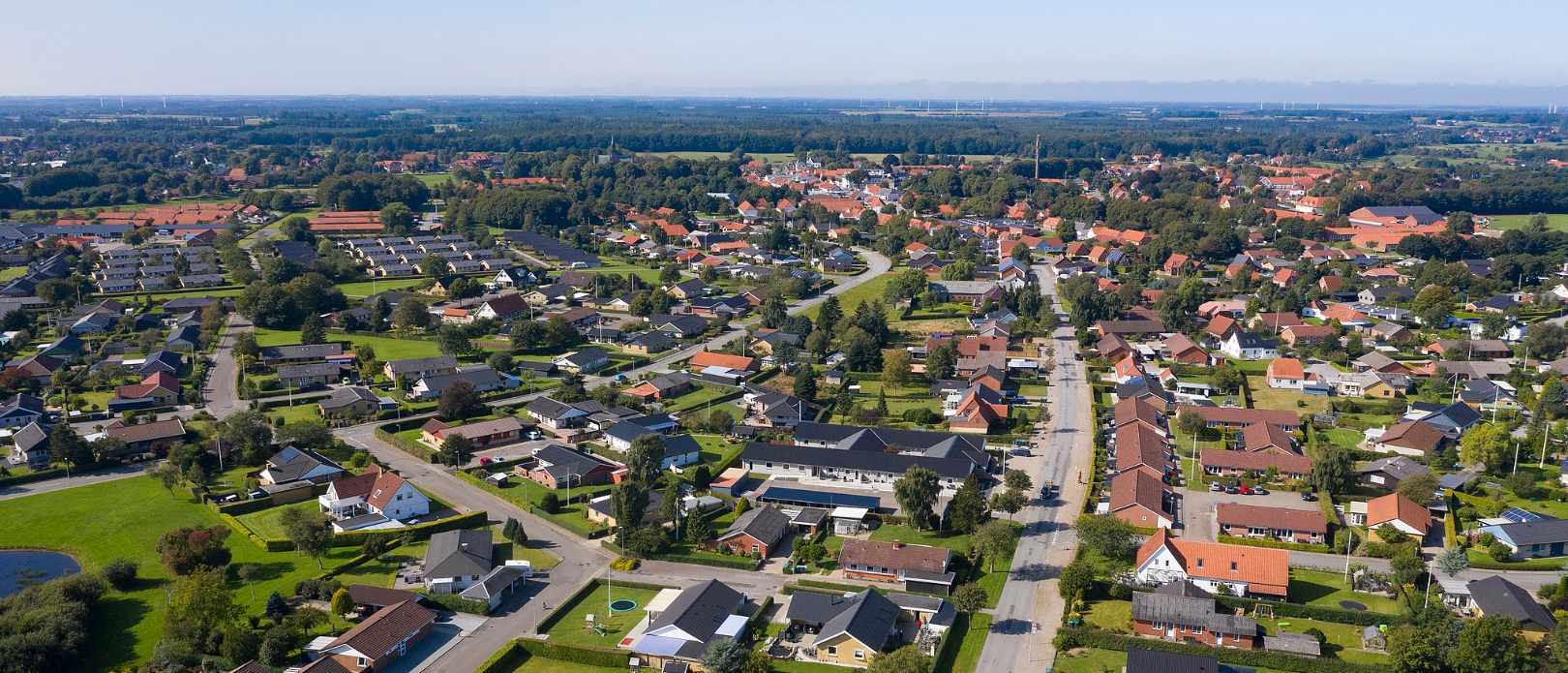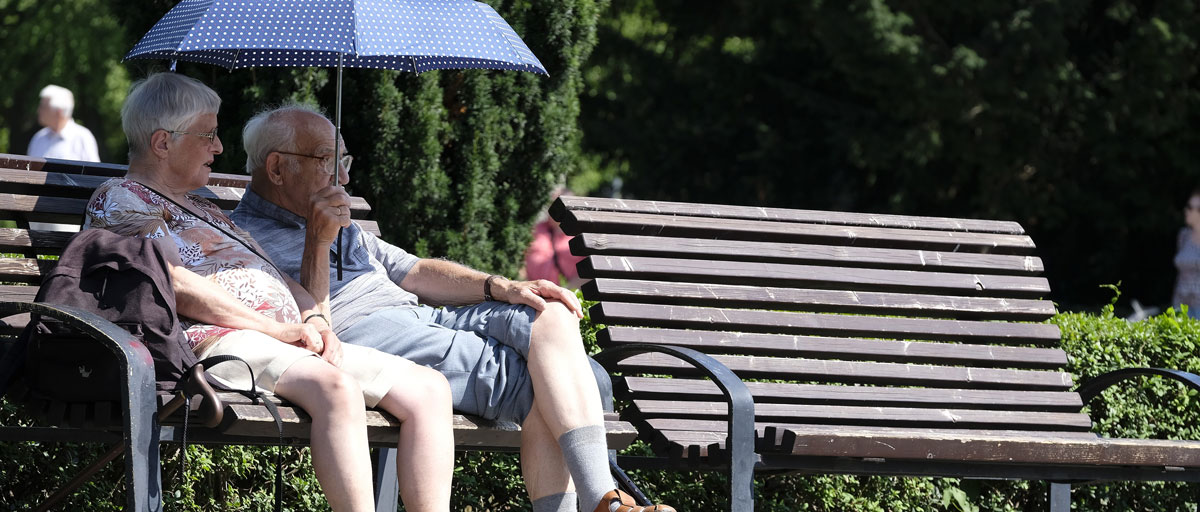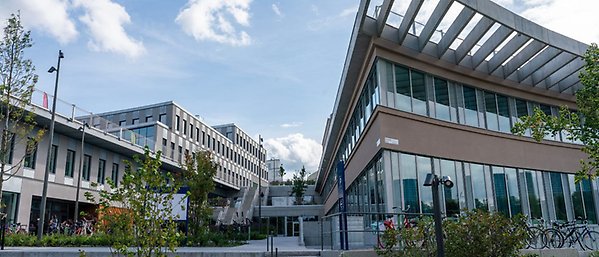cities and climate change
Three things needed for successful climate adaptation in cities
Freiburg, Durban and Singapore show why combining social, nature-based and technological solutions to urban climate challenges can work
- Record climate extremes are reducing urban liveability, compounding inequality, and threatening infrastructure
- Clear need to think strategically about layering urban adaptation solutions that can lead to greater resilience
- Measures integrating social, nature-based, and technological solutions can provide multiple co-benefits
ONE, TWO, THREE, GO!: From scorching heat waves, drought restrictions and hurricanes to deadly floods and devastating wildfires, extreme weather events are becoming an increasingly common everyday reality for cities across every continent.
With the proportion of urbanites set to rise to over 70% by 2070, there has been a large push by governments to address these dizzying impacts of climate change through a range of technological, nature-based and social solutions.
How have some of these efforts actually fared in real life?
A Lancet Planetary Health Viewpoint led by Brenda Lin from CSIRO Land & Water, with an international team including centre researchers Thomas Elmqvist, Erik Andersson and Timon McPhearson, examined three cities with very different urban contexts and climates: Freiburg in Germany, Durban in South Africa, and Singapore.
These three case studies highlight that technological, nature-based, and social solutions can work in concert with each other to address many sustainability goals simultaneously, as well as increase resilience to climate change across diverse socioeconomic contexts.
Brenda Lin, lead author
Social-cultural change
The researchers found that integrating solutions for adapting to climate change offers great potential for long-term sustainable change.
For example, in the southwestern German city of Freiburg, significant efforts have been made to increase the accessibility of public transport.
As a techno-ecological solution, tram corridors were built with grassed, pervious surfaces as part of water-sensitive urban design and for stormwater drainage.
As a social solution, public transport costs were subsidised to discourage car use.
Additionally, mixed-use zoning ensured that community needs like schools, shops, services, and green spaces were met locally, thus reducing the need for private car ownership.
“However, there are challenges, which include competing priorities, lack of resources, and planning under uncertainty,” they say.
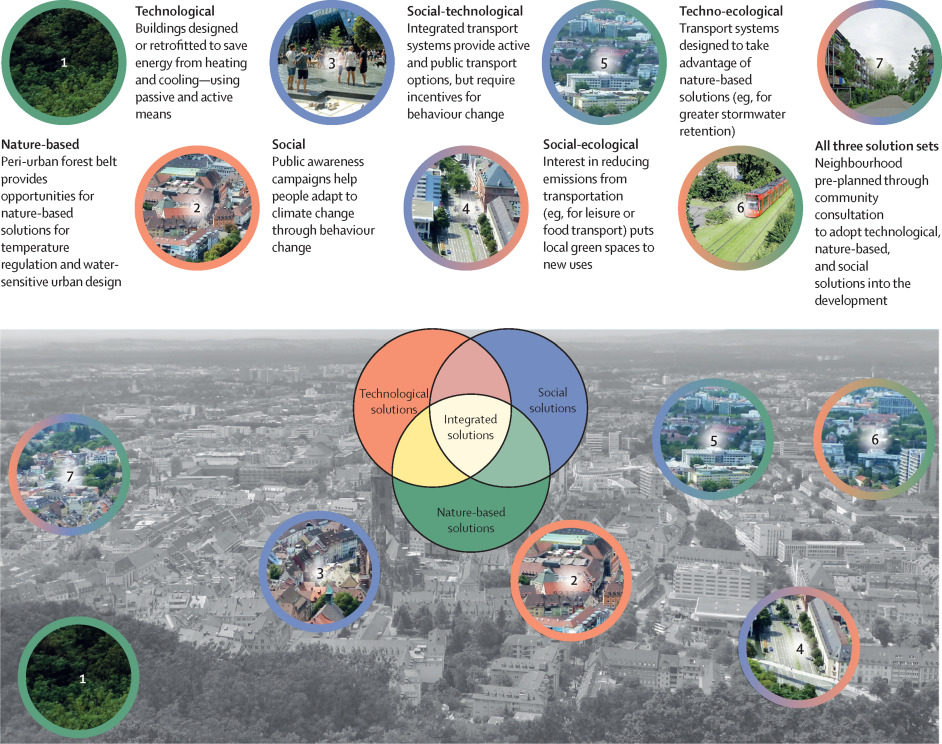
Different circumstances across a city might require the integration of different solution sets. Illustration from The Lancet Planetary Health Viewpoint.
Four next steps
Going forward, the researchers suggest four next steps to ensure the development and implementation of integrated solutions that are technically sound, nature-based, and socially equitable.
“A better understanding for how to create enabling environments, how to integrate solutions in different contexts, how solutions can be complementary, and how to transfer and scale up solutions are key for embedding integrated solutions into the urban adaptation decisions of cities globally,” they conclude.
Lin, B.B., Ossola, A., Alberti, M., Andersson, E., Bai, X., Dobbs, C., et.al. 2021. Integrating solutions to adapt cities for climate change. The Lancet Planetary Health. Viewpoint, Vol. 5, Issue 5, E479-E486, July 01, 2021, https://doi.org/10.1016/S2542-5196(21)00135-2
